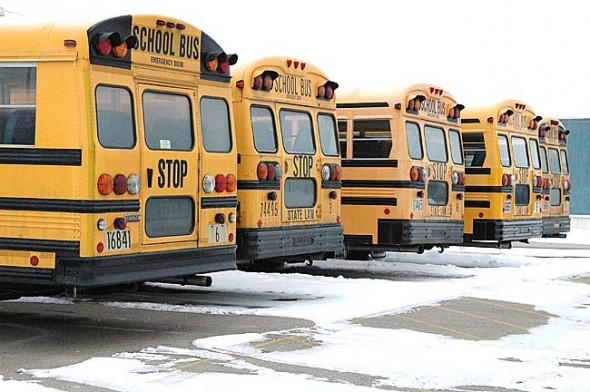Making the call for calamity days
- Published: February 27, 2014
On days when he might cancel school, Yellow Springs School Superintendent Mario Basora wakes up at 5 a.m. to drive a 20-minute loop around the district.
He crosses village streets and tests treacherous country roads such as East Enon Road, Fairfield Pike, Hustead Road, Grinnell Road, Bryan Park Road and Ohio 343, at times slamming on his brakes to see how his SUV handles the snow and ice.
“I have a pretty good idea what I’m going to do after that — if I make it that far,” Basora said this week.
During this exceptionally cold and snowy winter, Basora has closed local schools eight times, three more than the state’s maximum of five calamity days per school year without having to make up the days. He’s also delayed school by two hours six times. Because of the admitted hardship on parents, and teachers, it’s a decision Basora said he doesn’t take lightly.
“We want to make sure if we can have school, we have it,” Basora said. “But student safety is number one.”
This week, schools were closed on Tuesday, Feb. 18, because of icy roads — “The worst I’ve seen this year,” according to Basora. After an initial two-hour delay, Basora made the decision to cancel around 8 a.m. because the slick conditions were not safe for students, he said.
The last day of school for students has now been extended from May 30 to June 4 to make up for three of the missed days. However, a bill is making its way through the Ohio Legislature that would temporarily increase the calamity days for the 2013–14 school year to nine, while a separate proposal would excuse high school seniors from makeup days that fall after their graduation. YSHS’s graduation ceremony is May 29.
As the snow days have piled up for the district’s 720 students, they also wreaked havoc on school calendars and parent schedules. Fewer and shorter school days means less time for students to prepare for the upcoming Ohio Achievement Assessments and Ohio Graduation Test, so lower test scores could be in the offing.
And while the Community Children’s Center has at times accommodated the influx of extra kids on snow days, many parents are still without a reliable alternative when they can’t stay home with their kids or take them to work. Basora is exploring options with the Community Children’s Center to address that problem, he said.
“I know it’s been hard for a lot of families to work and try to figure out what to do with students on snow days and two-hour delays,” Basora said. “Tough as it, is we have to err on the side of safety for kids more than anything else.”
According to Basora, “There’s no hard and fast rule” about when to delay or cancel school, but subzero temperatures or wind chill temperatures below minus 15 degrees pose a particular danger to students who will be walking or waiting for the bus, so it’s likely he’ll at least delay school if those conditions are met, he said. Temperatures have dropped below zero at the Dayton International Airport 12 times this year; the annual average is four times.
Meanwhile, when snow or ice are in the forecast, Basora will stay glued to weather websites and conference call with superintendents in neighboring districts to make the right decision, he said. Though he tries to make the call as early as possible, he often waits until the morning because “you never know for certain.” How school buses will handle hazardous road conditions is one factor, along with the potential commute for inexperienced teen drivers and staff members traveling long distances, Basora said.
So far this winter, 45 inches of snow have fallen in Dayton, about 28 inches more than normal, according to the National Weather Service’s Wilmington office. The area has already seen twice as much snow as the entire 2012–13 winter season. In the case that such harsh winter weather becomes “the new normal,” Basora said that local people will adjust, raising the threshold for calling snow days in the future.
“As we have more and more cold days, people are more prepared,” Basora said. “I think we get used to it, we learn how to drive in it and deal with it. “
If the legislation adding calamity days doesn’t pass, the Yellow Springs school district may have to make up some of its snow days this summer break, a situation that affects family scheduling more than school costs, which are marginal during makeup days, Basora said. But new statewide rules taking effect next school year may mean the end of makeup days. Instead of a minimum required days, districts will have to meet a minimum number of required hours of school. Two-hour delays will now count against those hours, but Yellow Springs already goes far beyond the minimum by about 15 days in equivalent hours, Basora explained. The result is that the district has a lot more flexibility in its schedule next year and beyond, he said.
The Yellow Springs News encourages respectful discussion of this article.
You must login to post a comment.
Don't have a login? Register for a free YSNews.com account.














No comments yet for this article.